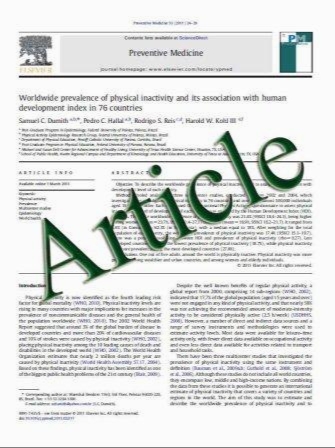Three-dimensional collagen represses cyclin E1 via b1 integrin in invasive breast cancer cells
- نوع فایل : کتاب
- زبان : انگلیسی
- مؤلف : Yuehan Wu Xun Guo Yekaterina Brandt Helen J. Hathaway Rebecca S. Hartley
- چاپ و سال / کشور: 2010
Description
The behavior of breast epithelial cells is influenced by their microenvironment which includes stromal cells and extracellular matrix (ECM). During cancer progression, the tissue microenvironment fails to control proliferation and differentiation, resulting in uncontrolled growth and invasion. Upon invasion, the ECM encountered by breast cancer cells changes from primarily laminin and collagen IV to primarily collagen I. We show here that culturing invasive breast cancer cells in 3-dimensional (3D) collagen I inhibits proliferation through direct regulation of cyclin E1, a G1/S regulator that is overexpressed in breast cancer. When the breast cancer cell line MDAMB- 231 was cultured within 3D collagen I gels, the G1/S transition was inhibited as compared to cells cultured on conventional 2D collagen or plastic dishes. Cells in 3D collagen downregulated cyclin E1 protein and mRNA, with no change in cyclin D1 level. Cyclin D1 was primarily cytoplasmic in 3D cultures, and this was accompanied by decreased phosphorylation of Rb, a nuclear target for both cyclin E1- and cyclin D1-associated kinases. Positive regulators of cyclin E1 expression, the transcription factor c-Myc and cold-inducible RNA binding protein (CIRP), were decreased in 3D collagen cultures, while the collagen I receptor b1 integrin was greatly increased. Inhibition of b1 integrin function rescued proliferation and cyclin E1 expression as well as c-Myc expression and Rb phosphorylation, but cyclin D1 remained cytoplasmic. We conclude that cyclin E1 is repressed independent of effects on cyclin D1 in a 3D collagen environment and dependent on b1 integrin interaction with collagen I, reducing proliferation of invasive breast cancer cells.
Breast Cancer Res Treat (2011) 127:397–406 Received: 14 December 2009 / Accepted: 22 June 2010 / Published online: 4 July 2010 Springer Science+Business Media, LLC. 2010


